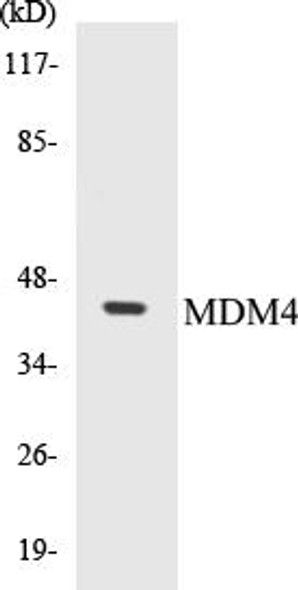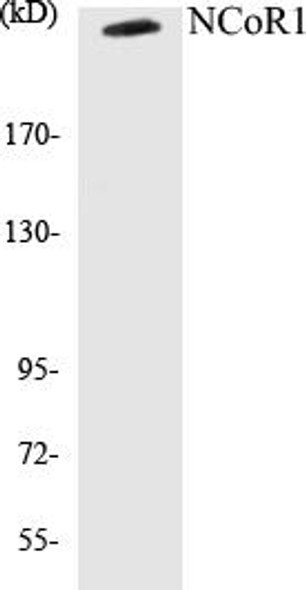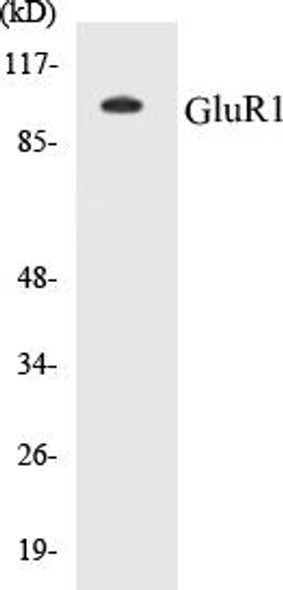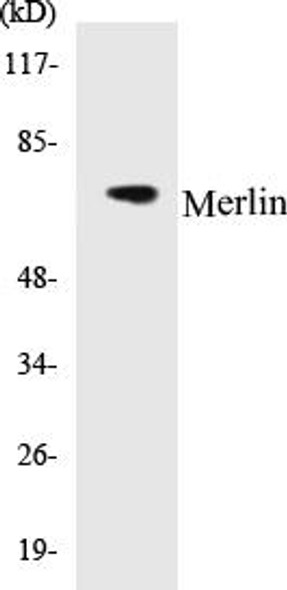Cox1 Colorimetric Cell-Based ELISA Kit
- SKU:
- CBCAB00167
- Product Type:
- ELISA Kit
- ELISA Type:
- Cell Based
- Research Area:
- Metabolism
- Reactivity:
- Human
- Detection Method:
- Colorimetric
Description
Cox1 Colorimetric Cell-Based ELISA Kit
The COX1 Colorimetric Cell-Based ELISA Kit is a cutting-edge assay designed for the accurate quantification of Cyclooxygenase 1 (COX1) levels in cell lysates and tissue homogenates. This kit offers exceptional sensitivity and specificity, allowing for precise and reliable measurements in a variety of cell types and experimental conditions.COX1 is a key enzyme involved in the production of prostaglandins, which play critical roles in inflammation, pain, and other physiological processes. Dysregulation of COX1 has been implicated in various diseases, including cancer, inflammatory disorders, and cardiovascular conditions, highlighting its importance as a potential therapeutic target.
With the COX1 Colorimetric Cell-Based ELISA Kit, researchers can accurately assess COX1 expression levels in their experimental systems, providing valuable insights into the underlying mechanisms of disease and facilitating the development of novel treatment strategies. This user-friendly and efficient kit is an essential tool for studying COX1 biology and advancing our understanding of its role in health and disease.
| Product Name: | Cox1 Colorimetric Cell-Based ELISA |
| Product Code: | CBCAB00167 |
| ELISA Type: | Cell-Based |
| Target: | Cox1 |
| Reactivity: | Human |
| Dynamic Range: | > 5000 Cells |
| Detection Method: | Colorimetric 450 nmStorage/Stability:4°C/6 Months |
| Format: | 96-Well Microplate |
The Cox1 Colorimetric Cell-Based ELISA Kit is a convenient, lysate-free, high throughput and sensitive assay kit that can detect Cox1 protein expression profile in cells. The kit can be used for measuring the relative amounts of Cox1 in cultured cells as well as screening for the effects that various treatments, inhibitors (ie siRNA or chemicals), or activators have on Cox1.
Qualitative determination of Cox1 concentration is achieved by an indirect ELISA format. In essence, Cox1 is captured by Cox1-specific primary antibodies while the HRP-conjugated secondary antibodies bind the Fc region of the primary antibody. Through this binding, the HRP enzyme conjugated to the secondary antibody can catalyze a colorimetric reaction upon substrate addition. Due to the qualitative nature of the Cell-Based ELISA, multiple normalization methods are needed:
| 1. | A monoclonal antibody specific for human GAPDH is included to serve as an internal positive control in normalizing the target absorbance values. |
| 2. | Following the colorimetric measurement of HRP activity via substrate addition, the Crystal Violet whole-cell staining method may be used to determine cell density. After staining, the results can be analysed by normalizing the absorbance values to cell amounts, by which the plating difference can be adjusted. |
| Database Information: | Gene ID: 5742, UniProt ID: P23219, OMIM: 176805, Unigene: Hs.201978 |
| Gene Symbol: | PTGS1 |
| Sub Type: | None |
| UniProt Protein Function: | COX-1: May play an important role in regulating or promoting cell proliferation in some normal and neoplastically transformed cells. Homodimer. Belongs to the prostaglandin G/H synthase family. 2 isoforms of the human protein are produced by alternative splicing. |
| UniProt Protein Details: | Protein type:EC 1.14.99.1; Lipid Metabolism - arachidonic acid; Oxidoreductase Chromosomal Location of Human Ortholog: 9q32-q33.3 Cellular Component: endoplasmic reticulum membrane; photoreceptor outer segment; intracellular membrane-bound organelle; cytoplasm; nucleus Molecular Function:prostaglandin-endoperoxide synthase activity; peroxidase activity; dioxygenase activity; metal ion binding; heme binding Biological Process: regulation of blood pressure; xenobiotic metabolic process; cyclooxygenase pathway; arachidonic acid metabolic process; response to oxidative stress; lipid metabolic process; prostaglandin biosynthetic process; inflammatory response; regulation of cell proliferation |
| NCBI Summary: | This is one of two genes encoding similar enzymes that catalyze the conversion of arachinodate to prostaglandin. The encoded protein regulates angiogenesis in endothelial cells, and is inhibited by nonsteroidal anti-inflammatory drugs such as aspirin. Based on its ability to function as both a cyclooxygenase and as a peroxidase, the encoded protein has been identified as a moonlighting protein. The protein may promote cell proliferation during tumor progression. Alternative splicing results in multiple transcript variants. [provided by RefSeq, Jan 2014] |
| UniProt Code: | P23219 |
| NCBI GenInfo Identifier: | 317373262 |
| NCBI Gene ID: | 5742 |
| NCBI Accession: | P23219.2 |
| UniProt Secondary Accession: | P23219,Q15122, Q3HY28, Q3HY29, Q5T7T6, Q5T7T7, Q5T7T8 A8K1V7, B4DHQ2, B4E2S5, |
| UniProt Related Accession: | P23219 |
| Molecular Weight: | 72,010 Da |
| NCBI Full Name: | Prostaglandin G/H synthase 1 |
| NCBI Synonym Full Names: | prostaglandin-endoperoxide synthase 1 (prostaglandin G/H synthase and cyclooxygenase) |
| NCBI Official Symbol: | PTGS1 |
| NCBI Official Synonym Symbols: | COX1; COX3; PHS1; PCOX1; PES-1; PGHS1; PTGHS; PGG/HS; PGHS-1 |
| NCBI Protein Information: | prostaglandin G/H synthase 1; PGH synthase 1; cyclooxygenase-1; prostaglandin H2 synthase 1 |
| UniProt Protein Name: | Prostaglandin G/H synthase 1 |
| UniProt Synonym Protein Names: | Cyclooxygenase-1; COX-1; Prostaglandin H2 synthase 1; PGH synthase 1; PGHS-1; PHS 1; Prostaglandin-endoperoxide synthase 1 |
| Protein Family: | Cox1 intron-like protein |
| UniProt Gene Name: | PTGS1 |
| UniProt Entry Name: | PGH1_HUMAN |
| Component | Quantity |
| 96-Well Cell Culture Clear-Bottom Microplate | 2 plates |
| 10X TBS | 24 mL |
| Quenching Buffer | 24 mL |
| Blocking Buffer | 50 mL |
| 15X Wash Buffer | 50 mL |
| Primary Antibody Diluent | 12 mL |
| 100x Anti-Phospho Target Antibody | 60 µL |
| 100x Anti-Target Antibody | 60 µL |
| Anti-GAPDH Antibody | 60 µL |
| HRP-Conjugated Anti-Rabbit IgG Antibody | 12 mL |
| HRP-Conjugated Anti-Mouse IgG Antibody | 12 mL |
| SDS Solution | 12 mL |
| Stop Solution | 24 mL |
| Ready-to-Use Substrate | 12 mL |
| Crystal Violet Solution | 12 mL |
| Adhesive Plate Seals | 2 seals |
The following materials and/or equipment are NOT provided in this kit but are necessary to successfully conduct the experiment:
- Microplate reader able to measure absorbance at 450 nm and/or 595 nm for Crystal Violet Cell Staining (Optional)
- Micropipettes with capability of measuring volumes ranging from 1 µL to 1 ml
- 37% formaldehyde (Sigma Cat# F-8775) or formaldehyde from other sources
- Squirt bottle, manifold dispenser, multichannel pipette reservoir or automated microplate washer
- Graph paper or computer software capable of generating or displaying logarithmic functions
- Absorbent papers or vacuum aspirator
- Test tubes or microfuge tubes capable of storing ≥1 ml
- Poly-L-Lysine (Sigma Cat# P4832 for suspension cells)
- Orbital shaker (optional)
- Deionized or sterile water
*Note: Protocols are specific to each batch/lot. For the correct instructions please follow the protocol included in your kit.
| Step | Procedure |
| 1. | Seed 200 µL of 20,000 adherent cells in culture medium in each well of a 96-well plate. The plates included in the kit are sterile and treated for cell culture. For suspension cells and loosely attached cells, coat the plates with 100 µL of 10 µg/ml Poly-L-Lysine (not included) to each well of a 96-well plate for 30 minutes at 37°C prior to adding cells. |
| 2. | Incubate the cells for overnight at 37°C, 5% CO2. |
| 3. | Treat the cells as desired. |
| 4. | Remove the cell culture medium and rinse with 200 µL of 1x TBS, twice. |
| 5. | Fix the cells by incubating with 100 µL of Fixing Solution for 20 minutes at room temperature. The 4% formaldehyde is used for adherent cells and 8% formaldehyde is used for suspension cells and loosely attached cells. |
| 6. | Remove the Fixing Solution and wash the plate 3 times with 200 µL 1x Wash Buffer for five minutes each time with gentle shaking on the orbital shaker. The plate can be stored at 4°C for a week. |
| 7. | Add 100 µL of Quenching Buffer and incubate for 20 minutes at room temperature. |
| 8. | Wash the plate 3 times with 1x Wash Buffer for 5 minutes each time. |
| 9. | Add 200 µL of Blocking Buffer and incubate for 1 hour at room temperature. |
| 10. | Wash 3 times with 200 µL of 1x Wash Buffer for 5 minutes each time. |
| 11. | Add 50 µL of 1x primary antibodies (Anti-Cox1 Antibody and/or Anti-GAPDH Antibody) to the corresponding wells, cover with Parafilm and incubate for 16 hours (overnight) at 4°C. If the target expression is known to be high, incubate for 2 hours at room temperature. |
| 12. | Wash 3 times with 200 µL of 1x Wash Buffer for 5 minutes each time. |
| 13. | Add 50 µL of 1x secondary antibodies (HRP-Conjugated AntiRabbit IgG Antibody or HRP-Conjugated Anti-Mouse IgG Antibody) to corresponding wells and incubate for 1.5 hours at room temperature. |
| 14. | Wash 3 times with 200 µL of 1x Wash Buffer for 5 minutes each time. |
| 15. | Add 50 µL of Ready-to-Use Substrate to each well and incubate for 30 minutes at room temperature in the dark. |
| 16. | Add 50 µL of Stop Solution to each well and read OD at 450 nm immediately using the microplate reader. |
(Additional Crystal Violet staining may be performed if desired – details of this may be found in the kit technical manual.)










